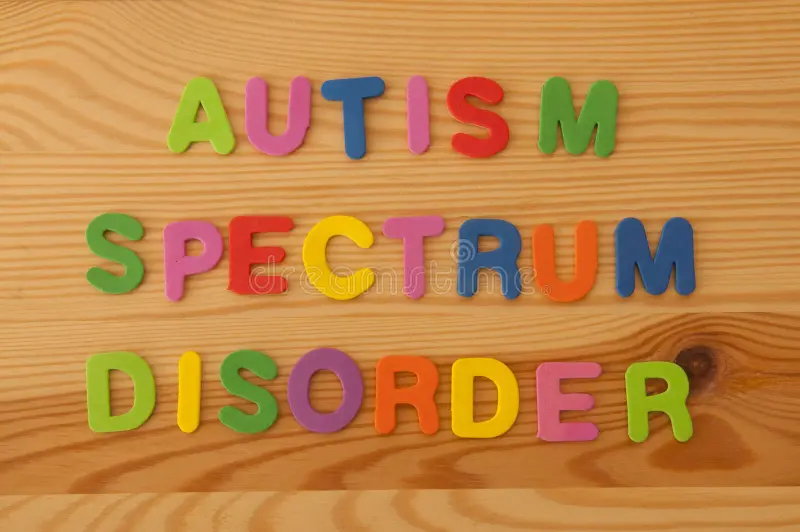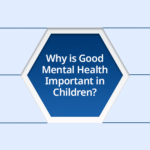Reflecting on my journey to understand Autism Spectrum Disorder, I see it as a complex issue. It impacts millions globally. Studies show ASD is more common than we thought, with 1 in 54 U.S. kids diagnosed.

It’s key to know the symptoms and causes of ASD for effective support. By diving into new research, we can better grasp this condition. This helps us create a welcoming space for those with ASD.
Key Takeaways
- ASD is a complex condition that affects millions worldwide.
- Understanding the symptoms and causes is crucial for support.
- Research suggests a higher prevalence of ASD than previously thought.
- Creating an inclusive environment is essential for individuals with ASD.
- Latest research and findings can help us better understand ASD.
Understanding Autism Spectrum Disorder
Autism Spectrum Disorder (ASD) is complex, with a wide range of symptoms and severity levels. This makes ASD a spectrum disorder, affecting people differently and to varying degrees.
The Spectrum Concept Explained
The term “spectrum” in Autism Spectrum Disorder means there’s a lot of variation in symptoms, skills, and levels of impairment. People with ASD may struggle with social interaction, communication, and repetitive behaviors. But how much they struggle can vary a lot. Research shows ASD is not just one disorder but a range of related conditions. This is key for creating effective interventions and support.
Historical Evolution of Autism Understanding
Our understanding of autism has changed a lot since it was first identified. At first, it was seen as a rare and severe psychiatric disorder. But as research grew, we learned autism includes a wider range of characteristics and severity levels. The shift to seeing autism as a spectrum has helped improve diagnosis and support strategies. This change shows how important ongoing research into ASD is.
What Is Autism Spectrum Disorder?
Autism Spectrum Disorder is a group of neurodevelopmental disorders. They affect social skills, repetitive behaviors, speech, and nonverbal communication. Understanding ASD means looking into its definition, how it’s classified, and how common it is.
Definition and Classification
The Diagnostic and Statistical Manual of Mental Disorders, Fifth Edition (DSM-5) defines Autism Spectrum Disorder. It breaks it down into three levels of support needed. These levels are:
- Level 1: Requiring support
- Level 2: Requiring substantial support
- Level 3: Requiring very substantial support
This system helps us see the wide range of needs within the autism spectrum.

Prevalence Rates in the United States
Studies show Autism Spectrum Disorder is more common than we thought. The Centers for Disease Control and Prevention (CDC) reports a high prevalence among children in the United States. Some important facts are:
- 1 in 36 children aged 8 years were identified with ASD in 2020.
- ASD is more common among boys than girls.
- The prevalence of ASD has been increasing over the past few decades.
These numbers show how crucial it is to raise awareness and fund research into Autism Spectrum Disorder.
Core Symptoms of Autism Spectrum Disorder
Autism Spectrum Disorder (ASD) has core symptoms that affect social communication, behavior, and how we process sensory information. These symptoms vary greatly among people, making each person’s experience with ASD unique.
Social Communication Challenges
People with ASD often find it hard to communicate socially. This can show up in different ways. Verbal and nonverbal communication differences are common, affecting how they interact with others.
Verbal vs. Nonverbal Communication Differences
Some with ASD may struggle to start or keep conversations. Others might find it hard to understand nonverbal cues like facial expressions or body language. These differences can impact social interactions and relationships.
Restricted and Repetitive Behaviors
Restricted and repetitive behaviors are a core symptom of ASD. These behaviors can include repeated movements, intense interests, or rigid adherence to routines. It’s important to understand these behaviors to provide the right support.
Sensory Processing Differences
Many with ASD have differences in how they process sensory information from their environment. Sensory integration techniques can help manage these differences.

How Autism Presents Differently Across the Spectrum
Autism spectrum disorder (ASD) shows up in many ways in different people. The DSM-5 breaks ASD into three levels. This helps tailor support to each person’s needs.
Level 1: Requiring Support
Level 1 individuals need help in certain areas, like talking or organizing. They might find it hard to start or keep conversations. Early help and support can really help them with social situations. For example, someone at Level 1 might need help with their schedule but can live on their own.
Level 2: Requiring Substantial Support
Level 2 people face big challenges in talking and acting. They might repeat actions a lot and have trouble with everyday tasks. Therapies like ABA can really help them. For example, someone at Level 2 might need a lot of help with daily tasks and can’t talk much.
Level 3: Requiring Very Substantial Support
Level 3 individuals need a lot of support because they face huge challenges in talking and acting. They might not be able to talk and need constant care.
“A supportive environment and special ways to communicate can really improve their life.”
For example, someone at Level 3 might need help with everything and might use pictures to communicate.

Comparing Early Signs of Autism by Age
Knowing the early signs of autism at different ages is key for a child’s growth. Spotting these signs early can lead to timely help. This help greatly benefits the child’s future.
Infancy (0-12 months)
In infancy, autism signs can be hard to spot. Some babies might not babble or not look at you when called. They might also not smile much.
Parents might notice if their baby doesn’t make eye contact or seem less interested in people.
Toddlerhood (1-3 years)
In toddlerhood, autism signs become clearer. Toddlers might not point or wave much. They could also get very into certain things over and over.
Preschool Age (3-5 years)
Preschoolers with autism might talk later than their peers. They might also have trouble keeping eye contact. They could really like certain things or routines.
School Age and Beyond
As kids get older, autism signs change. They might find it hard to make friends or understand jokes. They might also do the same things over and over.
Getting help early can really help them deal with these issues.
| Age Group | Common Early Signs of Autism |
|---|---|
| Infancy (0-12 months) | Delayed babbling, lack of response to name |
| Toddlerhood (1-3 years) | Limited gesturing, repetitive behaviors |
| Preschool Age (3-5 years) | Speech delays, difficulty with eye contact |
| School Age and Beyond | Social interaction challenges, repetitive behaviors |
Finding and helping with autism early is very important. By knowing the signs at each age, parents and caregivers can get the right help. This helps the child grow and develop better.
Autism Diagnosis Process
Diagnosing autism spectrum disorder (ASD) is a detailed process. It looks at a person’s development and behavior. This is key to finding the right support and treatments.
Screening Tools and Assessments
Many tools and assessments help diagnose ASD. These include:
- M-CHAT (Modified Checklist for Autism in Toddlers)
- AUTISM DIAGNOSTIC OBSERVATION SCHEDULE (ADOS)
- CARS (Childhood Autism Rating Scale)
These tools help professionals check for autism symptoms.
Comparing Different Diagnostic Instruments
Different tools have different levels of accuracy. For example, the ADOS is top for checking social and communication skills. The M-CHAT is great for catching autism early.
Diagnostic Criteria: DSM-5 vs. ICD-11
The rules for diagnosing autism have changed. The DSM-5 and ICD-11 offer different ways to diagnose:
| Criteria | DSM-5 | ICD-11 |
|---|---|---|
| Social Communication | Focuses on social communication issues | Looks at social interaction and communication |
| Restricted/Repetitive Behaviors | Includes sensory processing issues | Highlights repetitive behaviors |
Challenges in Diagnosis Across Different Demographics
Diagnosing autism can be tough for some groups. This includes girls and minorities. It’s because of biases in tools and how autism shows up differently.
Genetic Causes of Autism Spectrum Disorder
The genetics behind autism spectrum disorder are complex. They involve many hereditary and mutational factors. Studies show that genetics are a big part of ASD development.
Hereditary Factors and Family Patterns
Research shows that ASD is very heritable. Certain genetic mutations are passed down in families. This means families with ASD history are more likely to have another child with it.
Comparing Different Genetic Mutations and Variations
Many genetic mutations and variations are linked to ASD. These include copy number variations and single nucleotide polymorphisms. These changes can affect how genes work, leading to ASD.
| Genetic Mutation | Description | Impact on ASD |
|---|---|---|
| Copy Number Variations (CNVs) | Changes in the number of copies of specific DNA segments | Increased risk of developing ASD |
| Single Nucleotide Polymorphisms (SNPs) | Variations in a single nucleotide | Associated with ASD susceptibility |
Knowing about these genetic factors is key for diagnosing and treating ASD. More research is needed to understand autism’s genetic causes fully.
Environmental Risk Factors
Genetics play a role in Autism Spectrum Disorder (ASD), but so do environmental factors. Knowing these factors is key to studying ASD causes.
Prenatal and Perinatal Influences
Prenatal and perinatal factors can raise the risk of ASD. These include infections in the mother during pregnancy, exposure to pollutants, and delivery complications.
| Prenatal Factor | Description | Association with ASD |
|---|---|---|
| Maternal Infection | Infection during pregnancy | Increased risk |
| Environmental Pollutants | Exposure to pollutants like air pollution | Potential risk factor |
| Complications during Delivery | Difficulties during birth | Possible link |
Debunking Myths About Autism Causes
Many myths about ASD causes still exist, despite research. One myth is that vaccines cause ASD.
Vacines vs. Scientific Evidence
Studies have looked into the vaccine-ASD link. The science is clear: vaccines do not cause ASD.
It’s vital to understand ASD causes to improve research and support those with ASD. By focusing on proven factors and debunking myths, we can better understand this complex disorder.
Comparing Autism Treatment Options
It’s important to know about the different autism treatments. Each plan is made just for the person, using a mix of behavioral, educational, and medical methods.
Evidence-Based Behavioral Interventions
Behavioral interventions are key in treating autism. They help improve communication, social skills, and daily habits.
Educational Approaches and Accommodations
Educational methods are also crucial. They include special plans for each student, classroom help, and unique teaching styles.
Medical and Complementary Treatments
Medical treatments help with issues like anxiety or hyperactivity. Complementary therapies, like occupational and speech therapy, also offer benefits.
| Treatment Approach | Description | Key Benefits |
|---|---|---|
| ABA Therapy | Focuses on breaking down skills into smaller, manageable steps | Improves specific behaviors, such as communication and social skills |
| Developmental Approaches | Emphasizes a child-led, holistic methodology | Enhances overall development, including social and emotional growth |
| Educational Accommodations | Includes IEPs and classroom accommodations | Supports academic success and inclusion |
Benefits of Early Autism Intervention
Early intervention for autism spectrum disorder (ASD) greatly improves outcomes. It helps individuals with ASD in social, communication, and cognitive areas. Early diagnosis and treatment lead to big benefits.
Comparing Outcomes: Early vs. Late Diagnosis
Research shows early diagnosis and treatment are key. A study in the Journal of Autism and Developmental Disorders found big improvements. Children who got early intensive behavioral intervention (EIBI) did much better than those who started later.
The benefits of early intervention include:
- Improved social and communication skills
- Enhanced cognitive development
- Better academic and vocational outcomes
- Increased independence in daily life
Family Support Systems and Resources
Family support is also vital for ASD individuals. It includes support groups, educational resources, and respite care. With the right support, individuals with ASD can thrive and reach their full potential.
Conclusion: Embracing Neurodiversity
As we wrap up our look at Autism Spectrum Disorder, it’s clear that understanding it is key. Through research, we’ve learned a lot about this complex condition.
Early help and support are crucial for those with ASD. They greatly affect a person’s growth and happiness. Knowing about autism helps us create a more welcoming and supportive world.
Accepting neurodiversity means seeing the special talents and challenges of ASD. This way, we can build a society that values and supports everyone, no matter their brain differences.
Read more; https://theparentzy.com/understanding-childrens-mental-health/
Read more; https://theparentzy.com/understand-child-development-milestone/
FAQ
What is Autism Spectrum Disorder (ASD)?
Autism Spectrum Disorder (ASD) is a neurological condition. It affects how people communicate, interact socially, and behave. It’s marked by trouble with talking and nonverbal communication, social interactions, and repeating behaviors.
What are the symptoms of Autism Spectrum Disorder?
Symptoms of ASD vary but often include trouble with social communication and interaction. People with ASD might also have repetitive behaviors. Some may have differences in how they process sensory information.
How is Autism Spectrum Disorder diagnosed?
Diagnosing ASD involves a detailed evaluation. This includes looking at a person’s developmental history and observing their behavior. Specialized tools and criteria, like those in the DSM-5, help determine if someone has ASD and its severity.
What are the different levels of Autism Spectrum Disorder?
The DSM-5 divides ASD into three levels. Level 1 needs some support, Level 2 needs a lot, and Level 3 needs a lot more. These levels help guide how much support someone with ASD might need.
What are the benefits of early Autism intervention?
Early intervention can greatly improve life for those with ASD. Studies show it can help with social skills, reduce behavioral issues, and increase independence.
What are the most effective Autism treatment options?
Effective treatments for ASD include behavioral interventions like Applied Behavior Analysis (ABA). Other options include educational approaches and medical treatments. The best plan is one that fits the individual’s needs.
Are there any environmental risk factors associated with Autism Spectrum Disorder?
Yes, some environmental factors might increase the risk of ASD. These include prenatal and perinatal influences. But, the exact causes of ASD are still being researched.
Can Autism Spectrum Disorder be cured?
There is no known cure for ASD. But, with the right support and accommodations, people with ASD can live fulfilling lives.
How can I support a loved one with Autism Spectrum Disorder?
Supporting a loved one with ASD means understanding their needs and providing emotional support. It’s also important to find resources and services that help them thrive. Having a strong family support system is key to positive outcomes.





Pingback: Attention-Deficit/Hyperactivity Disorder (ADHD) in Children - Theparentzy.com